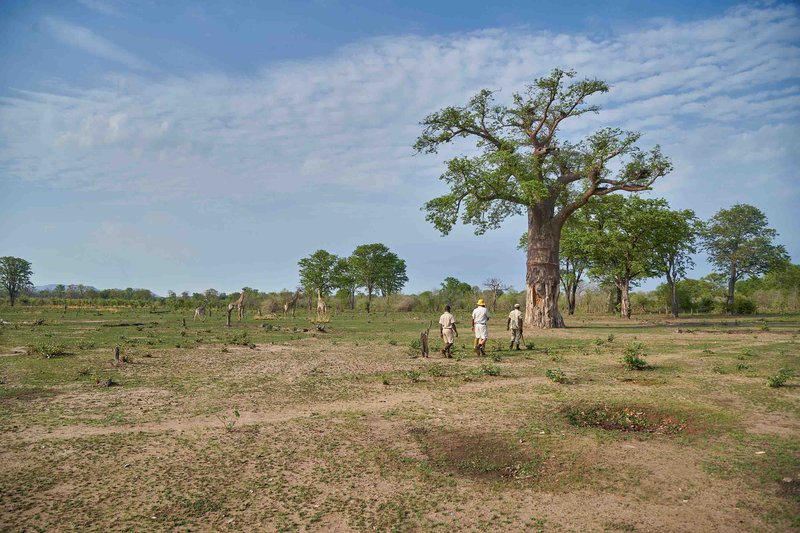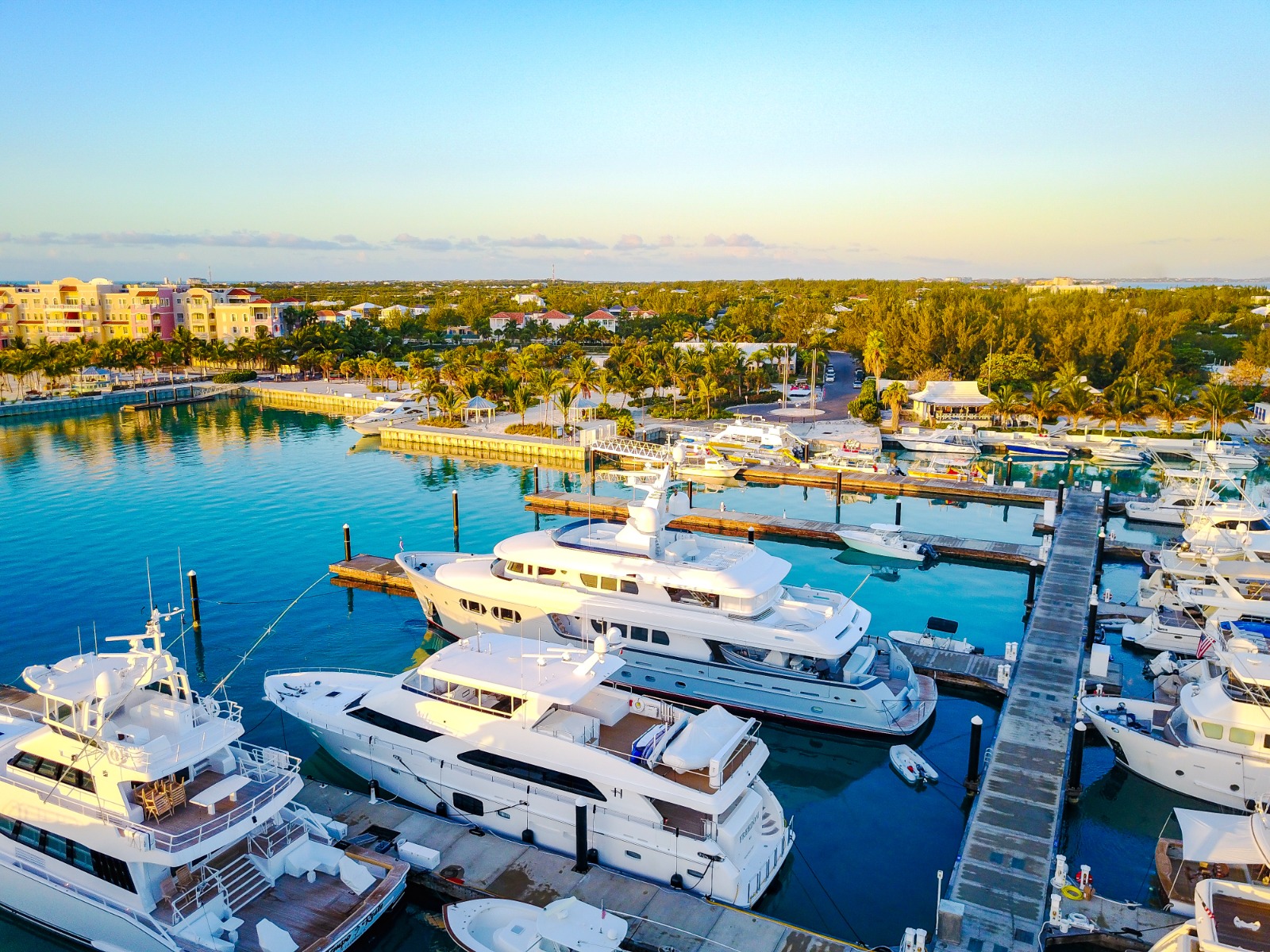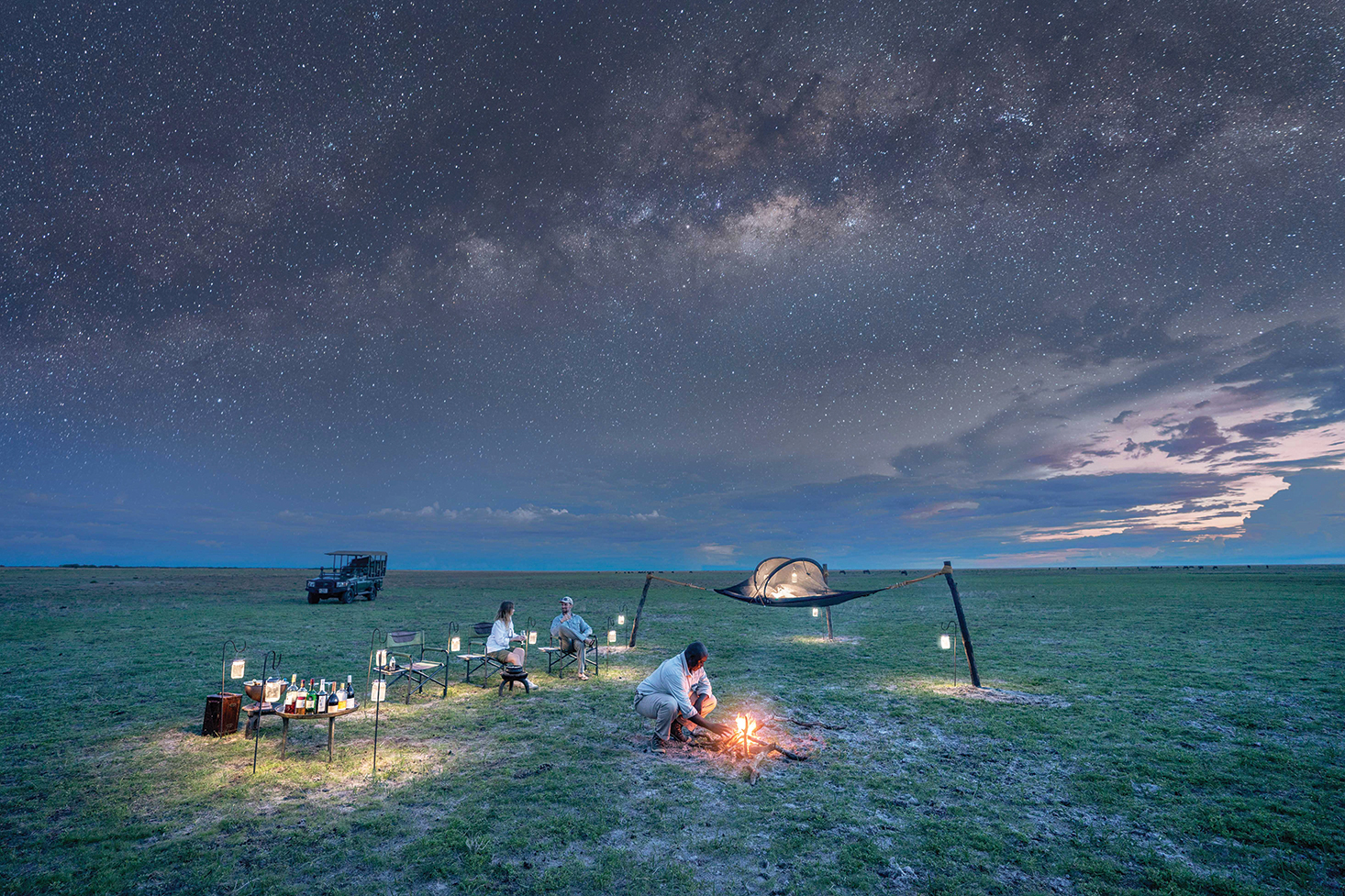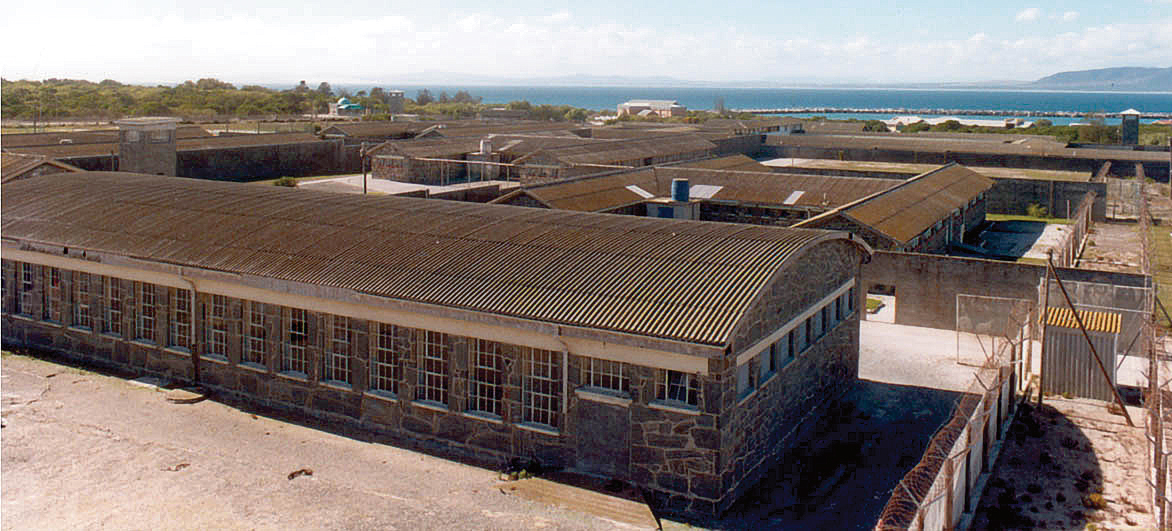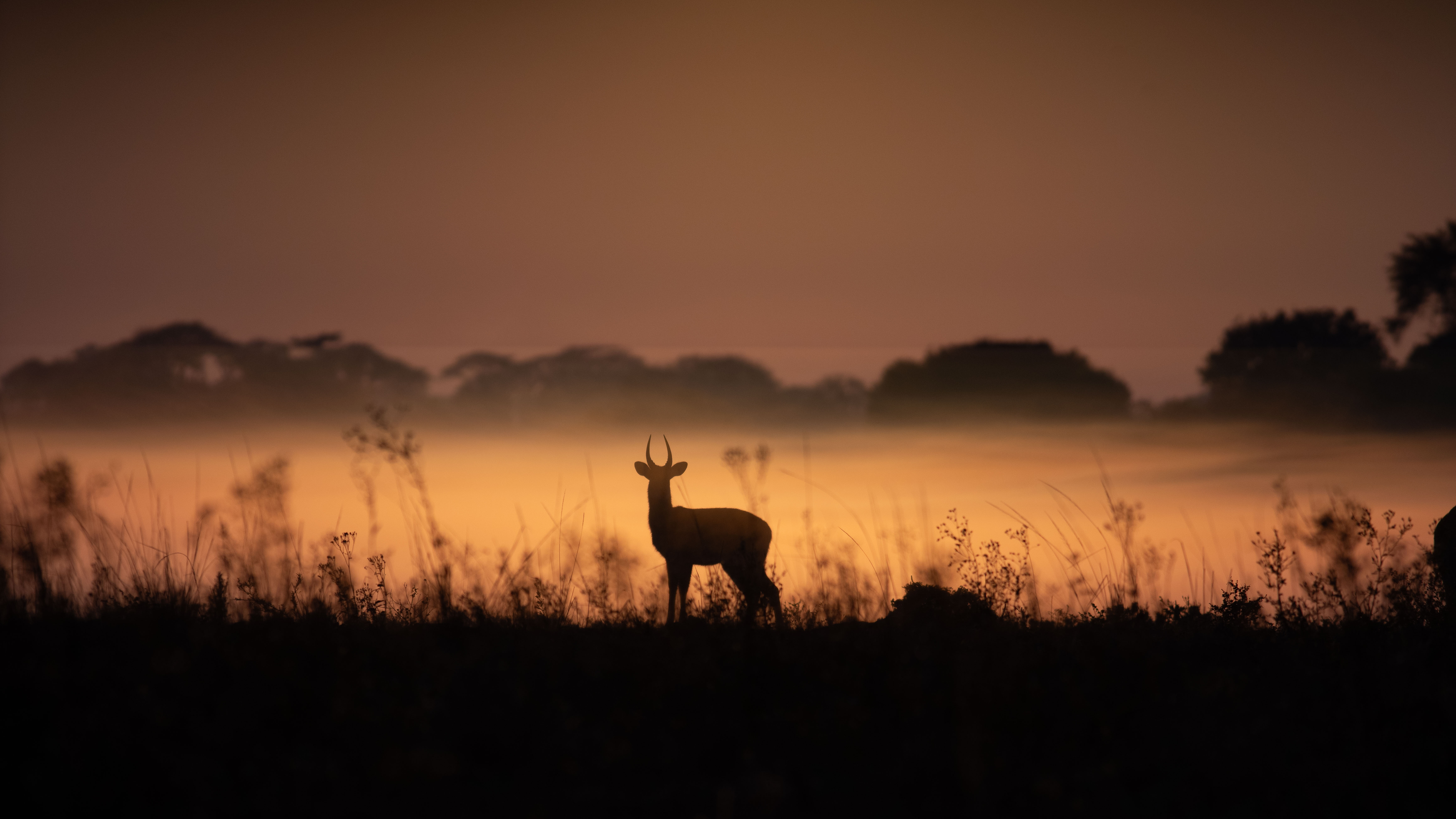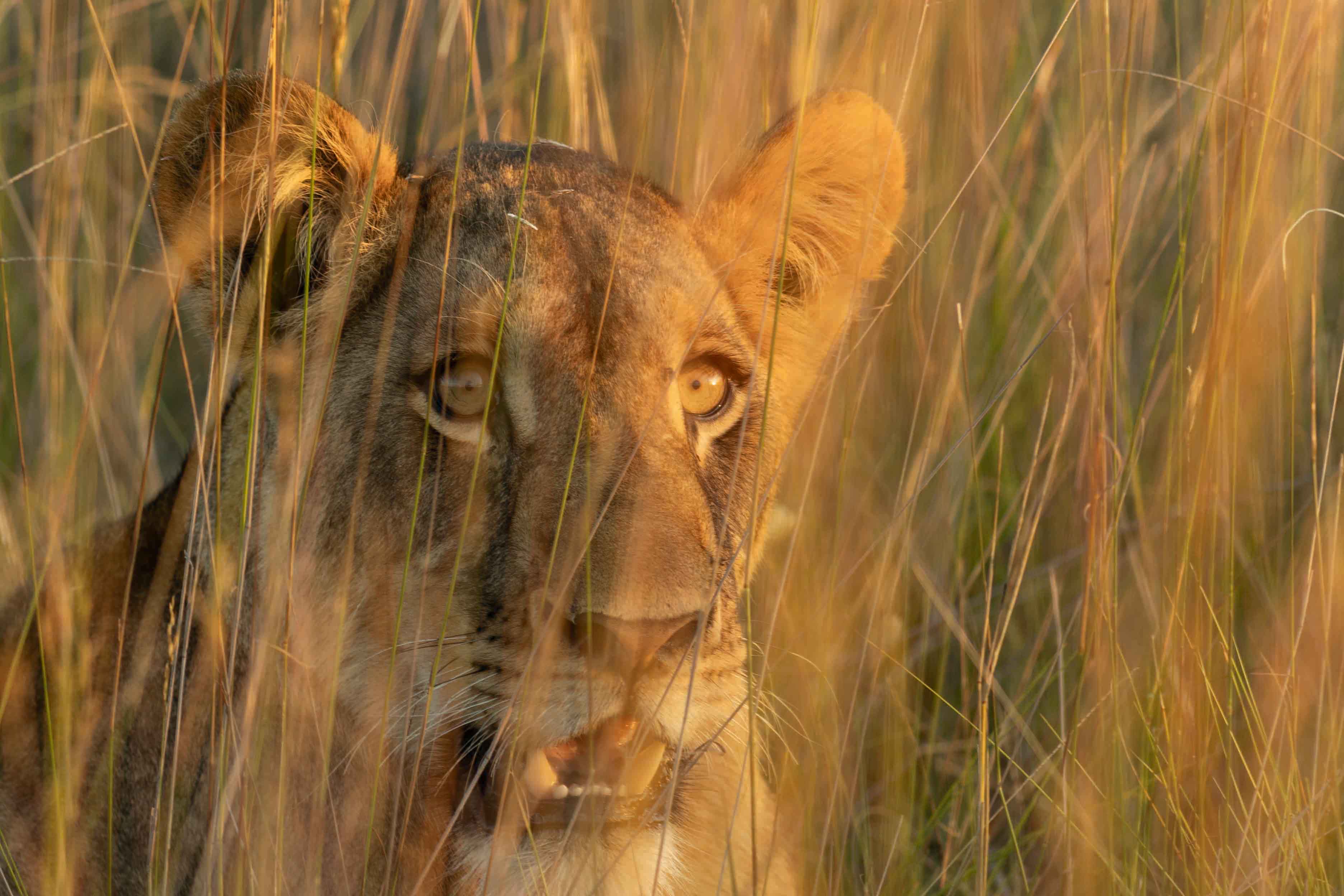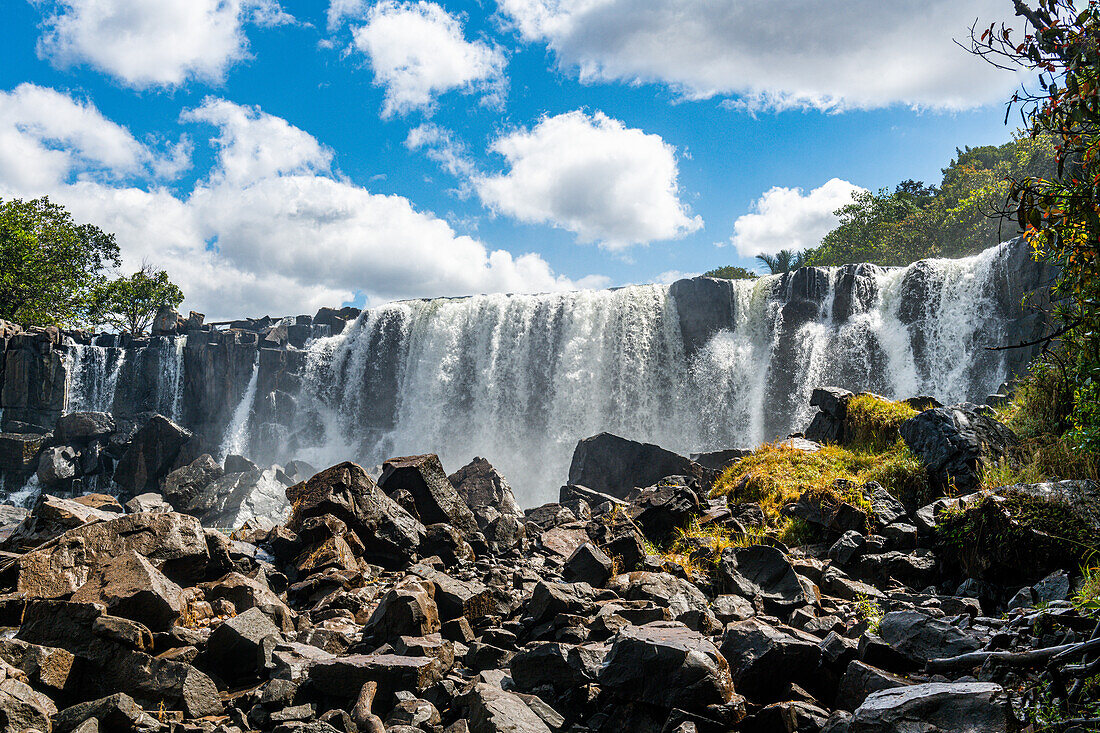Since its establishment in 1972, the park has flourished into one of Africa’s most pristine safari destinations, offering encounters with four of the Big Five, hundreds of bird species, and the highest leopard densities on the continent.
Did you know that the term ‘Walking Safari’ was firmly established in the South Luangwa National Park? The type of safari where you get to trek on foot in the unpredictable wildlands.
South Luangwa National Park
Since its declaration as a national park in 1972, Norman Carr, a British conservationist, envisioned a park free from hunters who sought to shoot wildlife with guns instead of cameras. His efforts led to an increase in wildlife populations, making South Luangwa a conservation success story.
The land also holds deep cultural significance. Just outside the park lies Kawaza Village, home to the Kunda tribe. In the 18th century, the Kunda people were the dominant group in the region. After escaping tribal warfare from the Bisa people in the 1840s, they settled in the Luangwa Valley, enduring further conflicts with the Portuguese and the Ngoni. With Zambia’s independence in 1964, Chiefs Kakumbi and Jumbe of the Kunda people became key figures in managing the land, assisting in wildlife conservation and sustainable development.
Today, South Luangwa remains "barely touched," a breath of fresh air and a sought-after tourist destination.

When to Visit South Luangwa National Park
To make the most of your visit, there are two main seasons of importance, each offering a unique experience:
- Dry Season (July–October): Wildlife gathersaround waterholes, making predators more active. Vegetation thins, offering better visibility.
- Rainy Season (December–April): Lush greenery returns, but animals are harder to spot. This is also when many newborns arrive.
Wildlife in South Luangwa National park
South Luangwa is home to four of the Big Five (lion, elephant, Cape buffalo, and leopard). The park boasts Africa’s highest leopard density, earning it the nickname "Valley of the Leopard." Though black rhinos were poached out in the 90s, they’ve since been reintroduced in North Luangwa and hopefully will return to South Luangwa in the future.
While exploring South Luangwa, come face to face with towering elephants grazing peacefully near the lodges, massive buffalo herds migrating to waterholes, and hippos crowding the Luangwa River, their dung enriching the ecosystem. Keep an eye out for endangered wild dogs hunting in coordinated packs, and don’t forget to look up: over 400 bird species await avid birdwatchers, making every moment here a wildlife spectacle.

What To Do In South Luangwa National Park
- Day & Night Game Drives: Zambia is one of the few places in the world where you can experience day and night game drives. Night game drives reveal nocturnal hunters like leopards and hyenas, and provide an unforgettable experience.
- Walking Safaris: Zambia is the birthplace of the walking safari. Explore the park on foot with an armed guide and nothing between you and the wildlife but your camera for hidden wildlife encounters.
- Boat Safaris: Silently cruise alongside hippos, crocodiles and elephants as they hunt and drink on the banks of the Luangwa River.
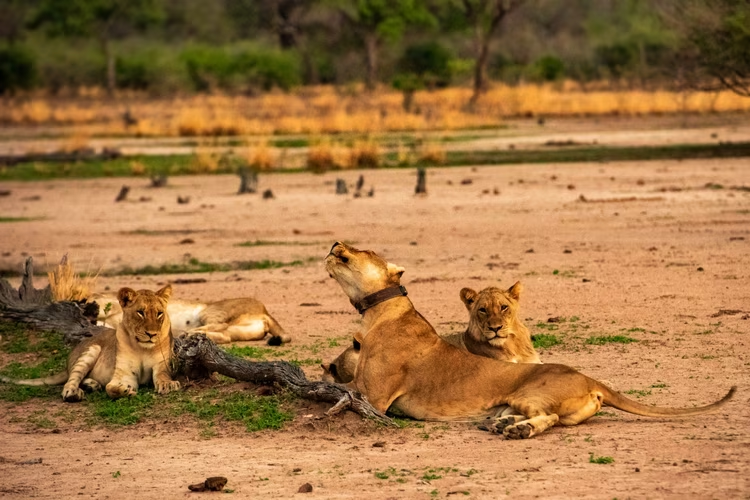
Where to Stay in South Luangwa National Park
The park has places to stay for every taste – from simple bush camps for adventurers to luxurious lodges for those who want comfort in the wild:
Chinzombo Camp
Chinzombo offers a touch of luxury in the heart of the bush. Set right on the Luangwa River, its villas come with private plunge pools and stunning views, perfect for watching hippos wallow in the water. It’s a beautiful blend of comfort and adventure.
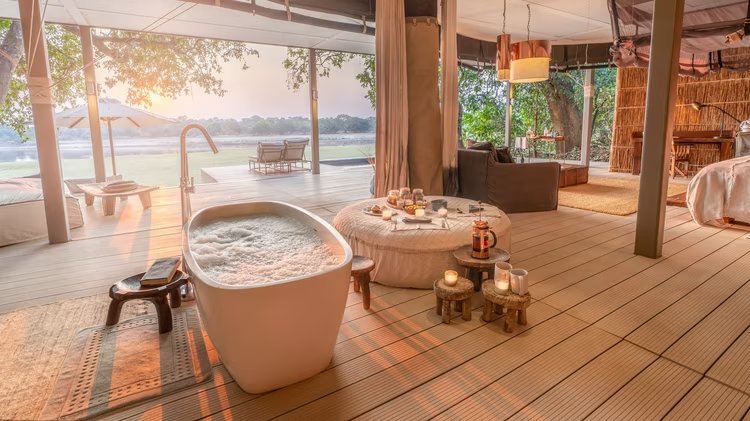
Three Rivers Camp
If you’re after a proper bush experience, Three Rivers Camp is the place. Tucked away where three rivers meet, this small camp keeps you close to nature. Simple but comfortable tents mean you might hear elephants wandering past at night.
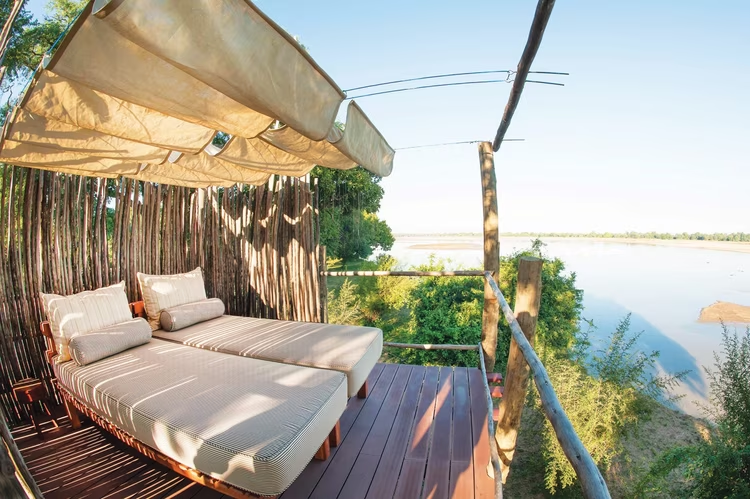
Kafunta River Lodge
Overlooking the river, its cosy thatched chalets and open-air bedrooms let you soak up the sights and sounds of the bush. Don’t miss their natural hot spring pool, ideal for a relaxing dip while elephants roam nearby. With great game viewing and friendly staff, it’s a fantastic spot for a classic safari holiday.
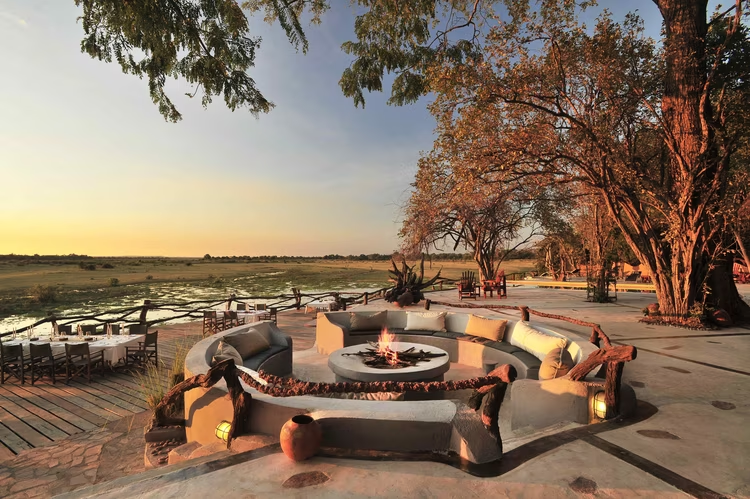
Whether you prefer an open-air tented camp or a lavish suite, all lodges provide breathtaking scenery, delicious bush cuisine, and warm hospitality.
How to Get To South Luangwa National Park
- By Air: A 1-hour flight from Lusaka to Mfuwe Airport, followed by a lodge transfer, arranged with your preferred lodge.
- By Road: A 9-hour, 600km drive from Lusaka (4x4 recommended).
What to Bring and Wear
- Clothing: Neutral colours (cream, beige, brown), layered for temperature changes. Avoid bright or white fabrics.
- Footwear: Comfortable, breathable shoes to avoid thorns.
- Essentials: Binoculars, telephoto lens camera, mosquito repellent.
What Else to Do in South Luangwa National Park
- Visit Kawaza Village: Experience Kunda culture and support local artisans by purchasing tribal textiles.
- Bush Spa: Relax with a massage or jacuzzi session amid the wilderness.
- Photography & Birdwatching: Capture stunning wildlife moments and rare bird species.
South Luangwa offers endless adventure—all you need to do is arrive, and the rest will be taken care of.
